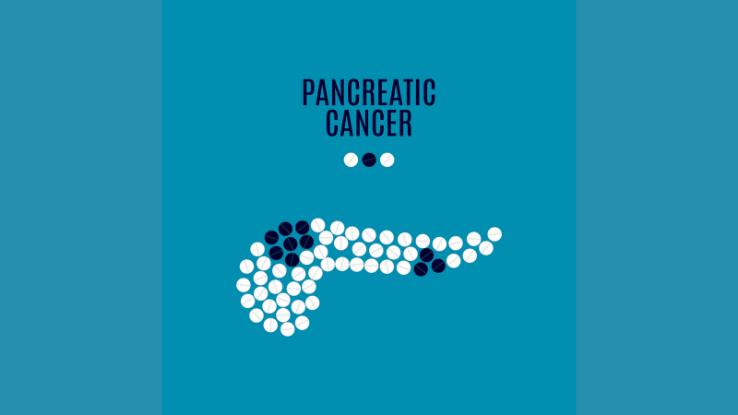what benefit are available to a cancer patient
Pancreatic Cancer: Everything You Need to Know

The pancreas is a bodily organ that few people remember well-nigh. In fact, nigh people don't fifty-fifty know what it does. Despite this, pancreatic cancer is among the deadliest types of cancer, which is why it'southward extremely important to know and recognize the typical signs and symptoms of this affliction.
What Is Pancreatic Cancer?
As the name suggests, pancreatic cancer is a type of cancer that starting time develops in the tissues of the pancreas. The pancreas is an organ located in the right side of the abdomen backside the lower part of the stomach. This organ'south purpose is to secrete enzymes that help your body digest food. It also secretes hormones that are responsible for regulating your blood glucose levels.
Pancreatic cancer is oft associated with a very poor prognosis because information technology is rarely detected in its early stages and the signs and symptoms of the disease aren't ever apparent until information technology'south as well late. Additionally, information technology is a very ambitious course of cancer that spreads quickly, making information technology difficult to treat. Unfortunately, the incidences of pancreatic cancer continues to rise.
Types of Pancreatic Cancer
There are many types of pancreatic cancer, but the majority of cases can be categorized into two main types. Based on the type of cells from which the cancer originates, most patients exhibit ane of these types of pancreatic cancers:
Exocrine (Nonendocrine) Pancreatic Cancer: This blazon of pancreatic cancer originates from the exocrine cells that grade the exocrine gland and pancreatic ducts. The exocrine gland produces the enzymes that help break down food, whereas the pancreatic ducts acquit these enzymatic juices to the common bile duct. There are diverse types of exocrine pancreatic cancer. The most mutual type is adenocarcinoma or ductal carcinoma, which affects the pancreatic ducts. Other more than rare types of exocrine pancreatic cancer include squamous cell carcinoma, adenosquamous carcinoma, and colloid carcinoma.
Neuroendocrine Pancreatic Cancer/Pancreatic Neuroendocrine Tumors (PanNETs): This blazon of pancreatic cancer is less common and occurs when tumors develop from the cells of the pancreatic endocrine gland, which is responsible for producing and secreting the hormones that regulate blood glucose levels (i.e. glucagon and insulin).
Symptoms Associated With Pancreatic Cancer
I of the about unsafe things nigh pancreatic cancer is that tumors in the pancreas can often grow for some time without whatsoever symptoms. However, there are a few indicators that pancreatic cancer may be developing, including:
- Dark-colored urine
- Pale-colored stools that float
- Nausea
- Vomiting
- Loss of appetite
- Bloating
- Indigestion
- Diarrhea
- Unintentional weight loss
- Jaundice (peel or eyes that become yellowish in colour)
- Pain or discomfort in the upper abdomen
- Back pain
- Claret clots
- Fatigue
These symptoms may be indicators of whatever number of diseases, so it's important to meet a dr. if you discover that you are experiencing any of these symptoms.
Causes & Take a chance Factors
Pancreatic cancer occurs in response to genetic mutation in the cells of the pancreas. The mutations allow the cells to divide and grow at unusually rapid rates. In addition, the mutations permit the cells to stay alive under weather in which normal cells would dice. Ofttimes, the accumulating cells will plough into a mass that forms a tumor.
There are several factors that tin increase a person's risk for pancreatic cancer, including:
- Age: The risk of pancreatic cancer increases with age. This is particularly true once a person surpasses the age of fifty.
- Assigned Sex activity at Birth: Pancreatic cancer is slightly more common in people assigned female at birth.
- Race: Blackness folks are more susceptible to developing pancreatic cancer than people of other races.
- Family History and/or Genetics: Having a family unit history of pancreatic cancer increases your run a risk for the affliction. In addition, the presence of certain genetic variations/mutations or syndromes, including BRCA1/2 or PRSS1 gene mutations, Lynch syndrome, and Peutz-Jeghers syndrome, increases a person'south chance of pancreatic cancer.
- Tobacco Use: Tobacco use is linked to an increased risk of pancreatic cancer.
- Other Health Conditions: People with pancreatitis (chronic inflammation of the pancreas) or diabetes and those who are overweight or obese have a higher take chances of pancreatic cancer.

Pancreatic Cancer Diagnosis
Pancreatic cancer is very difficult to diagnose because the pancreas is located behind other organs deep within the body. Withal, if an individual is suspected of having the disease, several diagnostic tests can be performed.
Diverse imaging techniques, including computerized tomography (CT) scan, positron emission tomography (PET) scan, magnetic resonance imaging (MRI), ultrasound, and endoscopic retrograde cholangiopancreatography (ERCP), are often used to determine if a pancreatic tumor is nowadays. Blood tests for circulating tumor markers also as liver function tests and chemistry panels tin also help diagnose pancreatic cancer. However, obtaining a biopsy to study the actual tissue is the about authentic method for diagnosing pancreatic cancer.
Are There Means to Foreclose Pancreatic Cancer?
There are no proven ways to prevent pancreatic cancer completely, only many people can reduce their risks past taking the post-obit steps:
- Stopping the use of tobacco products
- Maintaining a good for you weight
- Eating a nutrition with lots of fruits, vegetables, and whole grains
- Exercising regularly
Prognosis & Treatment
Sadly, pancreatic cancer is one of the most deadly types of cancer. Approximately 95% of patients will not survive v years by diagnosis. Additionally, patients with pancreatic cancer that cannot be surgically removed or that has spread to other parts of the torso are by and large given one year or less to alive. Because of the poor prognosis of the illness, some people do not undergo intensive handling once they are diagnosed. All the same, some types of pancreatic cancer may be treatable with the post-obit methods:
- Surgery: When possible, doctors volition endeavor to remove every bit much of the cancer from the pancreas as possible. One common surgical method is the Whipple procedure, which involves removing the head of the pancreas. The trunk of the pancreas likewise as surrounding structures, such as a portion of the small intestine, the gallbladder, or function of the bile duct, may also be removed. Other surgical methods include a distal pancreatectomy, which involves removing the tail of the pancreas, or a full pancreatectomy, in which the unabridged pancreas is removed. In any case, surgery always involves risks, such as bleeding or infection.
- Ablation or Embolization: These treatment strategies are different ways of removing pancreatic tumors without surgery. During ablation, extreme hot or cold is used to destroy the tumor. Some of these treatments include radiofrequency ablation (RFA), microwave thermotherapy, and cryosurgery. Embolization uses the injection of substances to block the blood flow to the tumor. At that place are 3 main types of this treatment: arterial embolization, chemoembolization, and radioembolization.
- Radiation Therapy: With radiations therapy, high-energy beams are used to kill the cancer cells in the pancreas and other areas to which they have spread.
- Chemotherapy: Chemotherapy is the use of drugs to kill off cancer cells. The drugs are administered orally or intravenously.
- Immunotherapy: This handling involves programming or stimulating the patient's allowed system to recognize and destroy the cancer cells. Various medications are used for this technique, including allowed checkpoint inhibitors.
- Clinical Trials: Because pancreatic cancer is ofttimes accompanied past a poor prognosis, many people join clinical trials to explore new ways to treat their disease. This may involve taking a drug or fifty-fifty getting an experimental pancreatic cancer vaccine.
Next Steps for Survivors
Although rare, it is possible to survive pancreatic cancer. For many patients, the cancer may not completely go away or information technology may come back in another office of the torso. Either way, it is extremely important to remain vigilant when it comes to follow-up intendance. Fifty-fifty though there will be a lot of changes after surviving pancreatic cancer, it is besides important to try to regain personal wellbeing past staying active, eating salubrious, reducing stress, and connecting with others, such as through a back up group.
Resource Links:
- "What Is Pancreatic Cancer?" via American Cancer Club
- "Pancreatic Cancer Types" via John Hopkins Medicine
- "Epidemiology of Pancreatic Cancer: Global Trends, Etiology and Adventure Factors" via World Journal of Oncology, U.South. National Library of Medicine
hardingmarjohishe1947.blogspot.com
Source: https://www.symptomfind.com/health-conditions/condition-pancreatic-cancer?utm_content=params%3Ao%3D740013%26ad%3DdirN%26qo%3DserpIndex